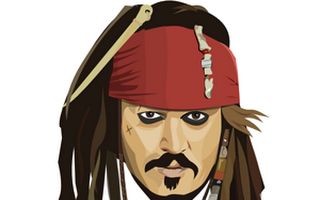
A new generation of gaming has arrived, but thanks to Microsoft's decision to make the Xbox Series X and S part of the same ecosystem as Xbox One, they are all compatible with the same accessories.
That includes external hard drives to store large game collections.
There are some caveats, especially with the next-gen machines, but if you want to store 10s (even hundreds) of Xbox One and/or backward compatible games on your new or old console without having to redownload them each time, you can do so on a USB 3.0 drive (or above).
Plus, exclusive to Xbox Series X/S, you can also use an official Seagate Storage Expansion Card to expand the internal storage capacity.
Here's how to do both.

Before we start, it's worth noting that an Xbox One will use an external drive in exactly the same way as its internal drive, so it's an ideal solution and could greatly improved the amount of games you can store at once.
The Xbox Series X and S can only play next-gen games from their internal drives (or Storage Expansion Card), but can play Xbox One, Xbox 360 and original Xbox games from a USB alternative (even with quick resume enabled), so it could be that you put all your backward compatible games on an external drive, reserving your internal SDD for native X/S games.
Choosing a drive
If you have an Xbox Series X or Xbox Series S, you can opt for a Seagate Storage Expansion Card that slots into the rear of either next-gen machine.
At present, it is only available in 1TB (although smaller sizes are out imminently) and is fairly expensive, but since it works exactly the internal storage, it's the only expansion that will enable all the next-gen features and loading times boasted by both machines.
squirrel_widget_3659696
Alternatively, you can use an external drive as long as it is USB 3.0-enabled or above (in fact, you can use up to three of them, one for every USB port on the Xbox One S, Xbox One X, Xbox Series S, or Xbox Series X). Remember though, as we've stated above, games with optimisations for Xbox Series X and S will not play from a USB drive, so this is a solution for Xbox One and other backwards-compatible games only.
If you're happy with that, there are plenty of external drives to choose from. We opted for a 2TB Seagate Game Drive designed especially for Xbox. It is USB 3.0, doesn't require an external power source so doesn't take up an additional socket under our AV cabinet, and its Xbox-adorned facia makes it a good fit. At less than £60 for 2TB, it's also good value.
squirrel_widget_3519867
Alternatively, you can also get an Xbox edition or standard version of the WD_Black P10 Game Drive. It is specially designed for gaming, with a sturdy build and storage of up to 5TB for around £100. It just depends on your budget.

You can even pay a bit more and opt for a 7200 RPM drive instead (the Seagate Game Drive is 5400 RPM) or even an external USB-driven SSD, but we've gone for convenience, no noise and price.
Note though, an external third-party SSD might offer faster loading times, but won't behave in the same way as the official Storage Expansion Card.
The set-up
We have included pictures of how to set up an external drive with the Xbox One, but it is identical on Xbox Series X/S.

Once you have your drive to hand, set-up is simple. Plug it into one of the three USB ports when your Xbox is on. A message will pop up on screen to show it recognises that the drive has been connected.

You can either go to the settings through interaction with the pop-up or head there manually and enter the "System" settings.
In there you will see the "storage" icon. Select it and the next page will show your existing external hard drive alongside the new one.
In all likelihood, the drive will need to be formatted before it can be used for anything other than storing video, picture and music files, especially if it's come straight out of the packaging. The Xbox needs to do that itself. So choose the new drive and scroll down to the option "Format". Select "Format storage device" and a new screen will pop up with a keyboard to select the drive's name.
We kept the default name "External" and chose to install new games and apps to the new drive when asked.
Formatting the drive takes no more than five or six seconds and you're good to go.

On your My Games & Apps screen, you will now see that the entire storage available, both internally and externally, is accumulated into one statistic.
We also recommend you completely shut down your Xbox One and reboot. We did and the drive worked very well straight after.
Moving games and performance
Naturally, the performance between an external drive and the SSD inside the Xbox Series X/S is significant.
However, when it comes to Xbox One models, our tests we found no discernible difference in loading speeds generally.
Moving games between drives on the consoles depends on the different technologies - it's obviously much quicker on next-gen. But, moving around 60GB on Xbox One X to an external drive took just over 40 minutes in total.
One benefit of moving games from the internal to the external drive is that you will be able to play your downloaded titles on a friend's Xbox One or Series X/S by just connecting the hard drive to his or her console and signing into your profile. You don't then need to redownload any games you wish to play.
The same is true if you want to move your own games from Xbox One to Series X/S.


No comments:
Post a Comment